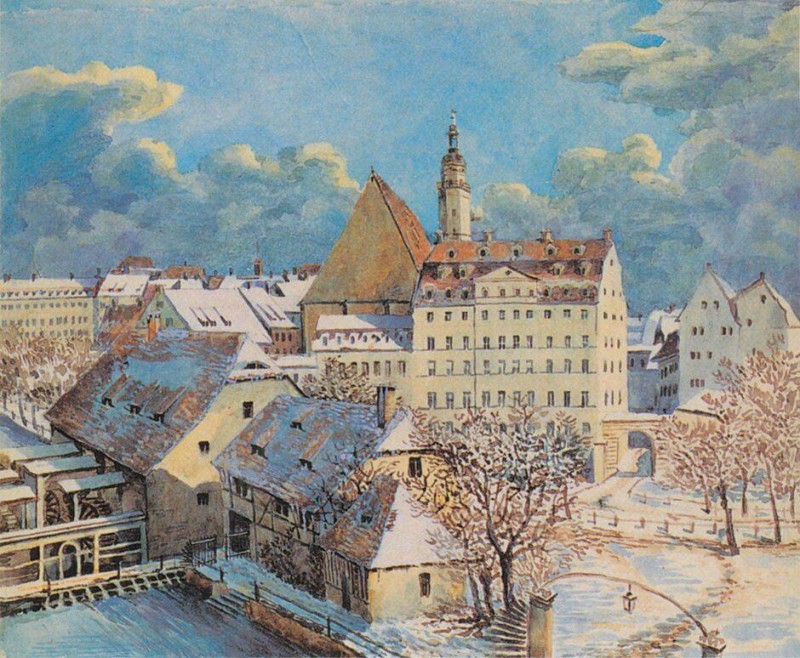The New York Review of Books posted this great painting by Mendelssohn of the St. Thomas Church in Leipzig.
I wrote about that seeing that church in Public Policy Hooligan – and in a 1987 New York Times article on how socialism was ruining the East Bloc. Here’s the riff from Hooligan – from a jaunt during which I played cat-and-mouse with the Stasi:
Leipzig, once the prettiest city in Germany, looked as if had been struck by a chemical plague. I saw many contorted trees that resembled a person writhing for his last breath. At the Thomas Church, where Martin Luther had preached, the right side of a statue of the Virgin Mary’s face showed a smile as angelic as when the church was reconstructed in the early 1700s. But, thanks to factories north of the city, the left side of her face was hideously disfigured, and an eye and an ear looked like they had been dug out with a pick.
Elsewhere in the city, a stack of cannonballs from the Thirty Years War was being gnawed away like termites eating a woodpile. If the wind and fog cut through stone like it was cotton candy, what was it doing to humans?
On a sunny day, visibility was only 800 yards; at the main train station, Soviet troops 25 yards away appeared in a haze. Though morning fog can be enchanting by a river, it is not as charming near a chemical factory.
On the train from Leipzig to East Berlin, I passed through Bitterfeld, the center of East Germany’s chemical industry, where signs proclaimed: “Chemistry brings prosperity, beauty, and bread.” But happy slogans could not indemnify residents for a bronchitis rate five times higher than elsewhere in DDR. It was a common saying in East Germany: “Who was once in Bitterfeld thinks it is beautiful everywhere.”
East Germans bragged of the “victory of socialism over the land.” Unfortunately, much of Eastern Europe was becoming a vast graveyard for Mother Nature. Pollution was pervasive largely due to the deification of economic plans. The only question of success or failure was whether industrial output rose. As long as the factories roared, it didn’t matter if people and everything else were dying.
As the train neared East Berlin, I slipped into the bathroom and stuffed two small notebooks into the front of my underwear. Leaving the country by foot after entering by car guaranteed “heightened scrutiny” at the border.
I shifted into my “Honest Abe” routine and scribbled that I was only “four or five lies from freedom.” I expected I would need the same song and dance to leave the country that I used at Zinnenwald to get in.
After the Schnellzeug (fast train) arrived in East Berlin an hour late, I hot-footed to the Friedrichstrasse station – the only subway stop where people could cross to West Berlin. The station’s main entrance room was known as the Tränenpalast (“Palace of Tears”) – because of people whose lives were shattered when East German guards prohibited them from exiting.
As I waited in the long queue, I reminded myself not to hum Arlo Guthrie’s song line, “Please don’t touch my bag, Mr. Customs Man.” My turn arrived and I explained in bad German to a grim-faced border guard why I didn’t have my car. He ordered me to await the Commandant. …


Comments are closed.